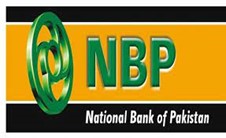 National Bank of Pakistan “NBP” “the Bank” today reported profit after-tax for the half-year ending June 30, 2021 of PKR 17.0Billion “Bn”, or PKR 7.97per share, on total revenue ofPKR 65.4 Bn. This is compared to profit after-taxof PKR 15.1Bn, or PKR 7.14pershare, on total revenues of PKR 66.8 Bn for the corresponding half year period of 2020. Strong financial results demonstratethe resilience of the Bank’s business model and the efforts of its staffduring this period.
National Bank of Pakistan “NBP” “the Bank” today reported profit after-tax for the half-year ending June 30, 2021 of PKR 17.0Billion “Bn”, or PKR 7.97per share, on total revenue ofPKR 65.4 Bn. This is compared to profit after-taxof PKR 15.1Bn, or PKR 7.14pershare, on total revenues of PKR 66.8 Bn for the corresponding half year period of 2020. Strong financial results demonstratethe resilience of the Bank’s business model and the efforts of its staffduring this period.
The Board of Directors of National Bank of Pakistan met under the Chairmanship of Mr. Zubyr Soomro, on August 26, 2021 to review the performance of the Bank and approve the condensed interim financial statements for the half-year ending June 30, 2021.
Revenues decreased 2% from the prior-year period, primarily reflecting the impact of drop in the policy rate and normalization in market activity. Gross mark-up/interest income of the Bank closed atPKR 108.0Bn,which is 25.7% below, YoY. Likewise, the interest/mark-up expense also dropped significantly by 37.4% toPKR 60.6Bn. Consequently, net interest/mark-up income of the Bank stood at PKR 47.4Bn, i.e. marginally 2.2% lower, YoY. Giventhe subdued tradeactivity during most of period under review, non-mark-up / non-interest earning of the Bank closed1.6% lowerat PKR 18.0Bn (Jun’20: PKR 18.3 Bn). Accordingly, total revenue of the Bank closed2.0% downYoY at PKR 65.4Bn (June’20: PKR 66.8Bn).
Despite inflationary pressures and higher operational costs amidst the pandemic, administrative costsremained well controlled and recorded a marginal increase of 3.7% YoY to close at PKR 30.6Bn. This translates into cost-to-income ratio of 46.8%, slightly up from 44.2% in 1H’20. During the period, NPLs of the Bank increased by 7.7% to close at PKR 184.4Bn (Dec’20: PKR 171.3 Bn). Proactively moving from ‘incurred’ to ‘expected’ credit loss model, the Bank created adequate provision charge of PKR 6.8Bn to make its balance sheet more resilient in the prevailing circumstances. Positively, provision charge for the period is 57% below the PKR 15.6 Bn provision charge in 1H’20.
On the balance sheet side, the Bank’s capital discipline has improved significantly. While complying with the regulatory capital requirements, the Bank’s total Capital Adequacy Ratio improved to 22.18%(Dec’20:19.78%). Strength of the capital is evident from the Bank’s Common Equity Tier-1 (CET1) to total risk weighted assets ratio which comes to 16.69%(Dec’20:14.99%) against the requirement of 6.00%. The Bank’s capitalization also resulted in a leverage ratio of 3.63% which is well above the regulatory limit of 3.0%.
This capital position enables the Bank to absorb shocks in the foreseeable future and leverage emerging business opportunities to create value for its shareholders. The Bank’s Liquidity Ratio and Net Stable Funding Ratio improved to 158% and 282%, respectively. Net Assets at end Jun’21 stood at PKR 285.5Bn, translating into break-up value per share at Rs. 134.2, which is 38% up from Rs. 97.2 at the beginning of 2019. The Bank’s total assets closed at PKR 3,616.9Bn i.e. 20.2% higher than PKR 3,008.5 Bn level of the year end 2020. The Bank enjoys highest local credit ratings of AAA / A1+ categories for long term and short term respectively as reaffirmed by both PACRA and VIS Credit Rating Company.
The BoD also deliberated on the impact of COVID 19 pandemic and its specific implications for the banking industry in Pakistan. Being categorized as a systemically important bank in Pakistan, NBP has depicted strong resolve to serve its customers across the country despite facing significant operational challenges.
The Bank is making progress on its strategy refresh across its consumer and institutional businesses forplaying its systemically important role in the economy while maintaining a strong and resilient balance sheet to deliver performance for shareholders. The management is committed to modernising the Bank to achieve excellence in risk and control environment, business processes and service quality to clients.For the year 2021 & beyond, the Bank’s business strategy will continue to focus on financing and supporting underserved sectors including SME, Microfinance, Agriculture Finance and the PM’s Low-Cost Housing initiative on a priority basis.


